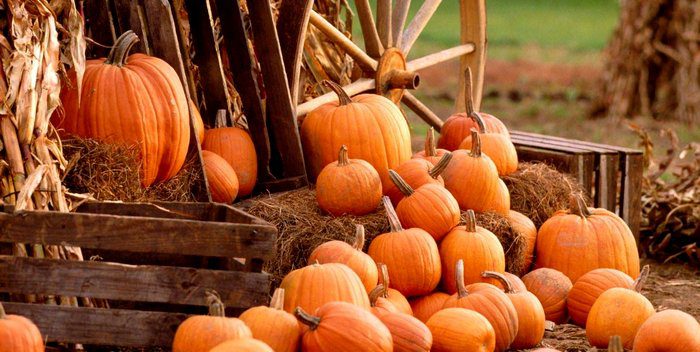
How to choose the right pumpkin?

Pumpkins come in many varieties and sizes. They are bought not only for eating, but also for creating decorative elements. Choosing a pumpkin for eating should be in accordance with certain rules. In large pumpkins, there is a violation of the taste and a significant compaction of the skin. The best option is medium-sized fruits.
The main types of pumpkin:
- large-fruited varieties (they are oval or round);
- hardy varieties (most often round);
- Muscat species (the shape resembles a pear, guitar or light bulb).
All pumpkin varieties differ in color, pulp consistency, taste and size. Fruit weight can reach 20-25 kg. The smallest fruits are distinguished by nutmeg pumpkins, the weight of which most often does not even reach 1 kg. In addition, pumpkins can be summer or winter depending on the ripening time. The first variety has a thinner skin and juicy pulp, the second type is considered ideal for long-term storage, but the skin will be dense and firm.
How to choose a pumpkin
Regardless of the pumpkin variety, inspection of the fruit before purchase is carried out according to certain rules. It is necessary to evaluate the fruits by touch, for the presence of aroma and conduct a visual assessment of the degree of maturity and quality.
What pumpkin should I buy:
- the larger the pumpkin, the more fibrous its pulp can be, so you need to buy small or medium-sized fruits;
- any kind of pumpkin has characteristic stripes that should be straight;
- the stalk of the pumpkin must be dry;
- a sign of a ripe pumpkin is a hard peel with a clearly visible and uniform pattern;
- the pumpkin peel must be free of dents, traces of rotting or mechanical damage;
- it is believed that the more orange pumpkin on the peel, the sweeter and tastier it is;
- the color of the flesh of a ripe pumpkin is bright orange or rich yellow;
- there should be no marks on a ripe pumpkin when you try to pierce its skin with a fingernail;
- pumpkin with small fruits and bluish skin is considered the sweetest and most versatile to eat;
- if the pumpkin is bought cut, then you should pay attention to the seeds (the seeds must be firm and ripe);
- if you knock on the surface of the pumpkin, then a characteristic dull sound should appear;
- a distinctive feature of the pumpkin is the discrepancy between the external parameters and the weight (the pumpkin can be much heavier than one might assume by visually assessing it).
What pumpkin is not worth buying:
- if the stripes on the skin of the pumpkin are in the form of bends or dashed lines, then this may be a sign of an increased content of nitrates;
- a green stalk may be a sign of insufficient maturity of the pumpkin;
- if there are dents or spots on the pumpkin, then this may be a sign of improper transportation or the beginning of the decay process;
- a pumpkin with mechanical damage can be damaged inside and it cannot be stored;
- if the stalk of the pumpkin is cut, then the seller could remove it to hide the fact that the pumpkin is not ripe;
- if the pumpkin peel is well pressed with a fingernail, then the fruit is not ripe;
- too large pumpkins can have not only fibrous pulp, but also differ in wateriness or bitterness (if the pumpkin is sold in a cut state, then, most likely, its size is too large to realize it as a whole);
- the pulp of overripe pumpkin may resemble the consistency of the dough;
- if the pumpkin is bought cut and the seeds are unripe, then the fruit itself will also not be too ripe.
One of the distinguishing properties of summer and winter pumpkin varieties is the degree of softness. Summer varieties have a more delicate texture and are suitable for cooking any kind of food, including stewing and frying. Winter varieties have a stiffer and firmer pulp, so they are more suitable for baking or making fillings.










